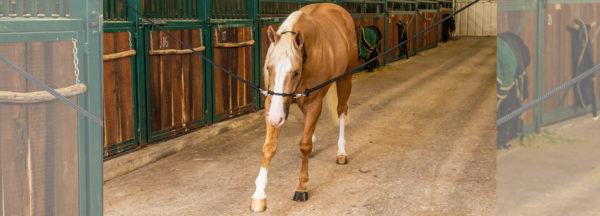Got a Horse That Paws? Clinton’s Got the Fix!

You’ve probably seen the horse that digs himself into a hole when left tied up or bangs a front hoof against the stall impatiently until he’s fed. It’s kind of like a little kid rolling around on the ground at the shopping center because his mother won’t buy him candy. He’s having a bit of a tantrum.
Initially, horses paw because they want or need something—they don’t want to stand tied or they want their grain faster. However, once a horse has been allowed to paw over a long period of time (and has been rewarded for his behavior), it often becomes an ingrained habit that no longer has any specific cause. For example, as soon as you tie him up, he immediately starts to paw before you can even turn and walk away from him. Or, as soon as you walk into the barn in the morning, he begins to paw the ground in anticipation of his feed.
If you’re dealing with a chronic pawer, Clinton shares tips on how to correct your horse’s behavior in the Problem Solving section of the Downunder Horsemanship app. Learn how to solve a pawing problem in these FREE videos:
Pawing While Tied Up
Pawing at Feeding Time
To access the videos, download the Downunder Horsemanship app. When the app opens, scroll down to the Problem Solving section. Select the video you want to watch.
The Downunder Horsemanship app is a free download from the App Store and Google Play as well as AppleTV, Roku, Amazon Fire and Android TV. Learn more about the Downunder Horsemanship app and adding it to your device on our website.
